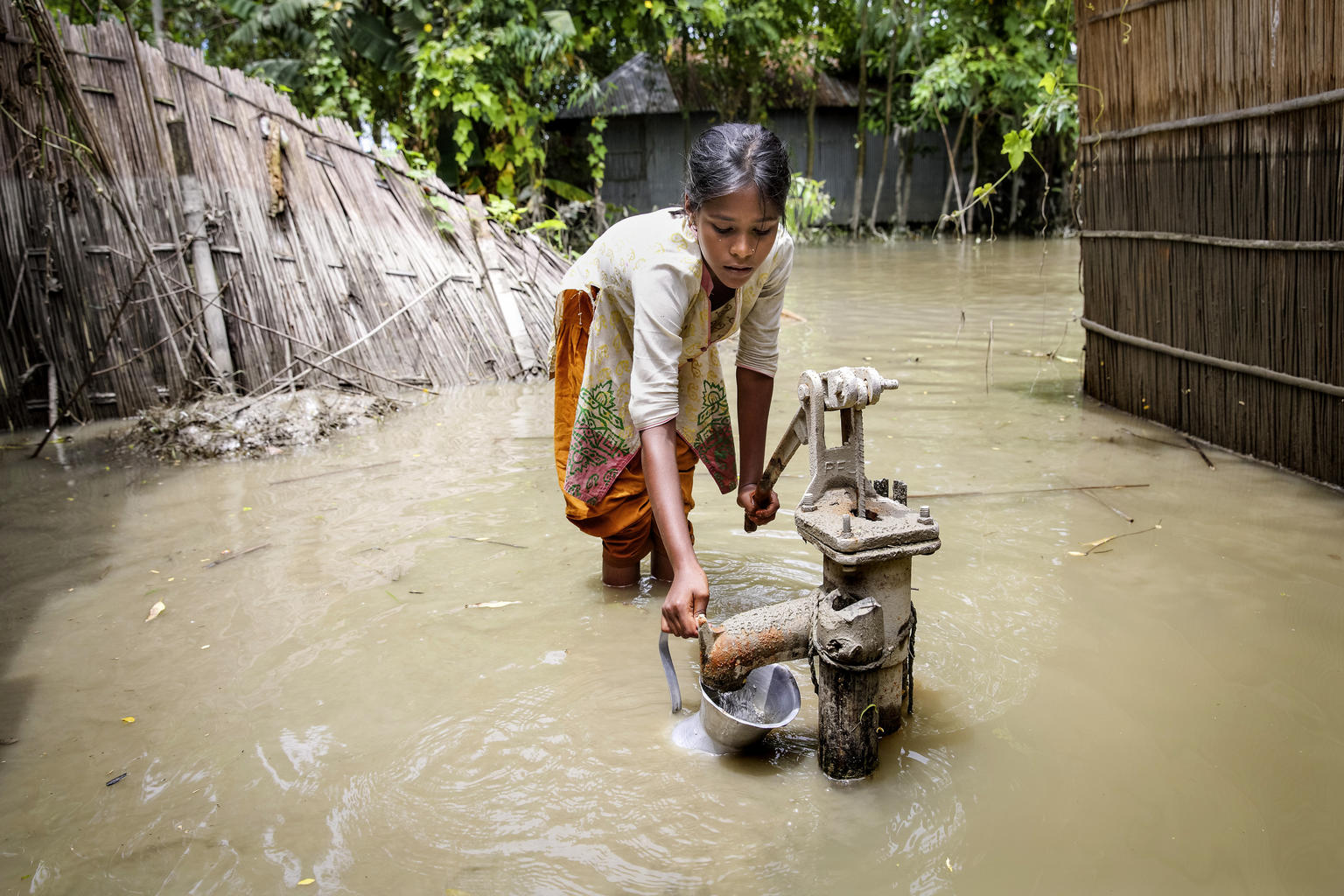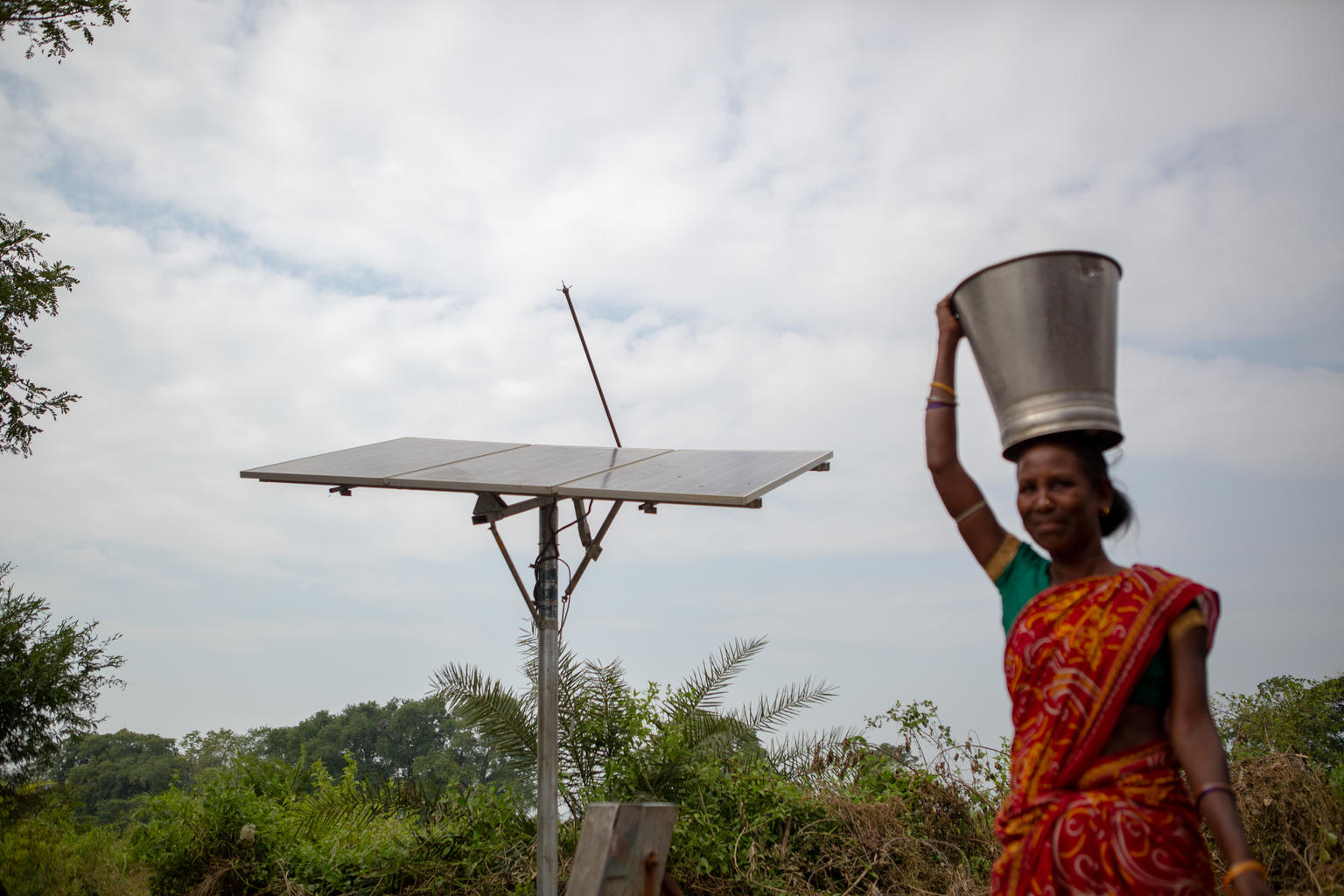Water and Disasters
Most disasters are water-related. Floods, landslides, storms, heat waves, wildfires, extreme cold, droughts and waterborne disease outbreaks are all becoming more frequent and more intense, mainly due to climate change.
The impacts of disasters are exacerbated by urbanization and degradation of natural environments. Improving the resilience of water and sanitation services and protecting ecosystems will be key to surviving a climatically uncertain future.

The issue explained
Most disasters are water-related and climate change is increasing their frequency and severity. Poor communities are more vulnerable to the impacts of disasters, widening inequalities and undermining sustainable development.
The impacts of disasters include loss of life and damage to water and sanitation infrastructure, such as waterpoints, wells, toilets and wastewater treatment facilities.
In the aftermath of disasters, infectious disease outbreaks are common due to the spread of sewage, the breakdown in water and sanitation services, and diminished ability to practise good hygiene.
The degradation of natural environments makes the impact of water-related disasters worse. Loss of natural ‘buffers’ such as trees, river bank-side vegetation, wetlands and coastal mangroves reduces protection from flooding.
Rapid urbanization can concrete over large areas of land, channelling run-off too rapidly into storm drains, quickly overwhelming the system and leading to catastrophic flooding of streets and subways.
Lack of cooperation across national boundaries can mean that action by one party or parties upriver, such as release of sewage or changes to flow, can have devastating consequences for communities downstream across the border.
The increasing economic cost and toll of disasters are driving governments and humanitarian organizations to focus more attention on preparedness, prevention and addressing the root causes of vulnerability.

The way forward
Adaptation of water and sanitation infrastructure is vital for the resilience of societies and natural environments to increasing numbers of disasters. Initiatives include:
- Enhanced water storage
- Climate-proof infrastructure
- Flood- and drought-resistant crop varieties
- Forecasting and early warning systems
- Land use planning and associated capacity building.
All countries must have a disaster risk reduction strategy that has water at its centre. The Sendai Framework for Disaster Risk Reduction, adopted by UN Member States in 2015, emphasizes water management as essential for reducing the occurrence and impacts of water-related disasters.
Facts and Figures
- In 2022, a mega-flood hit the Indus river basin in Pakistan during the monsoon period, leading to about 9% of the country being inundated, at least 1,700 fatalities, with 33 million people affected, and nearly 8 million people displaced. The total damage and economic losses were estimated at US$30 billion. (WMO, 2023)
- Water-related disasters have dominated the list of disasters over the past 50 years and account for 70% of all deaths related to natural disasters. (World Bank, 2022)
- In Latin America and the Caribbean, floods and landslides triggered by heavy rainfall led to significant fatalities and economic losses across the region in 2023. In São Sebastião, Brazil, 683 mm of rainfall accumulated in 15 hours, triggering a landslide that led to at least 65 deaths. (WMO, 2024)
- Every $1 invested in making infrastructure disaster-resilient saves $4 in reconstruction. (UNDRR, 2021)
- The number of weather-related disasters – floods, droughts, storms and extreme temperatures – has increased by a factor of five over the past 50 years, claiming, on average, the lives of 115 people and causing $202 million in economic losses every day. (WMO, 2021)
- More than 2 billion people are living in countries under water stress and 3.6 billion people face inadequate access to water at least one month per year. (WMO, 2021)
- Water-related hazards have increased in frequency for the past 20 years. Since 2000, flood-related disasters have increased by 134%, and the number and duration of droughts also increased by 29%. (WMO, 2021)
- Globally, children comprise 29.2% of populations in areas hit by weather-related internal displacement, compared to 25.5% in the general world population. (IMO, 2024)
